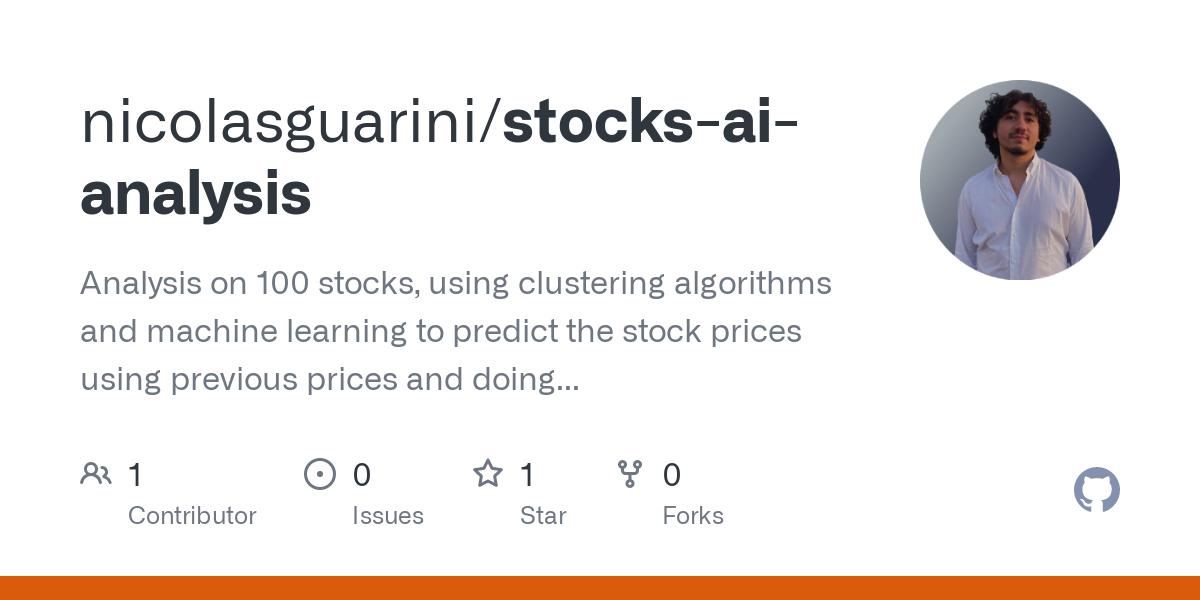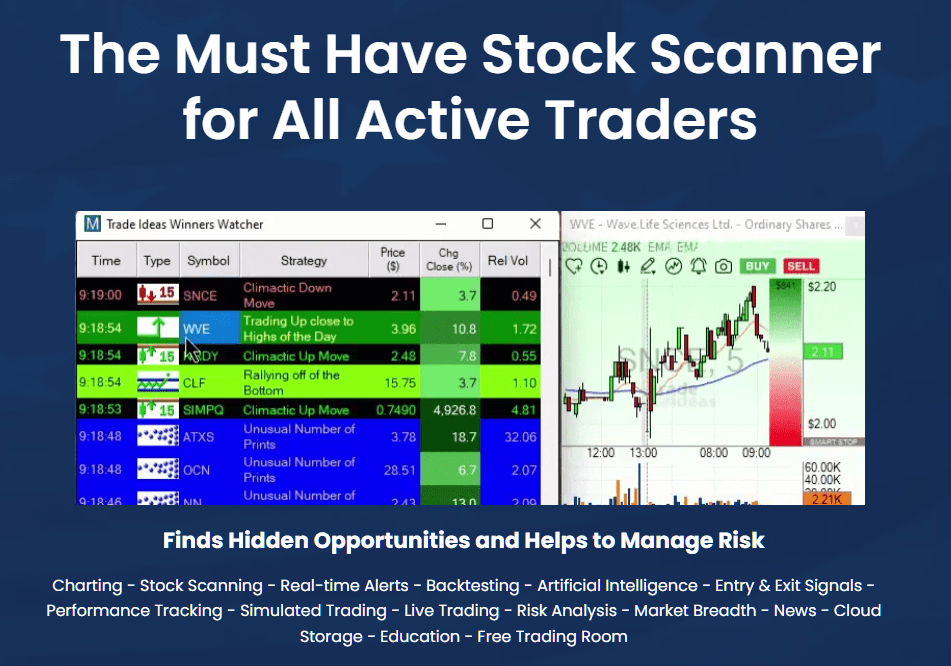20 New Tips For Picking Trading Ai Bot Websites
20 New Tips For Picking Trading Ai Bot Websites
Blog Article
Top 10 Suggestions For Considering Ai And Machine Learning Models On Ai Trading Platforms For Stocks
Assessing the AI and machine learning (ML) models utilized by trading and stock prediction platforms is vital in order to ensure that they are accurate, reliable, and actionable insights. Overhyped or poorly designed models could lead to inaccurate predictions and even financial loss. Here are the 10 best strategies for evaluating AI/ML models on these platforms.
1. Understanding the model's purpose and method of operation
A clear objective: determine whether the model was created for short-term trading, longer-term investment, sentiment analysis or risk management.
Algorithm transparency: See if the platform provides information on the kinds of algorithms utilized (e.g. regression, decision trees, neural networks, reinforcement learning).
Customization: See whether the model could be adjusted to your specific trading strategy or risk tolerance.
2. Assess Model Performance Metrics
Accuracy Check the model's predictive accuracy. Don't rely only on this measurement, however, as it may be inaccurate.
Accuracy and recall: Check the accuracy of the model to discern true positives, e.g. correctly predicted price changes.
Risk-adjusted returns: See whether a model's predictions produce profitable trades taking risk into consideration (e.g. Sharpe or Sortino ratio).
3. Test the Model by Backtesting it
History of performance The model is tested using historical data in order to determine its performance under prior market conditions.
Testing using data that isn't the sample: This is important to avoid overfitting.
Scenario Analysis: Check the model's performance under various market conditions.
4. Make sure you check for overfitting
Overfitting signs: Look for models that are overfitted. These are models that perform exceptionally well with training data, but less well on unobserved data.
Regularization: Determine if the platform uses regularization techniques like L1/L2 or dropouts in order to prevent overfitting.
Cross-validation (cross-validation) Check that your platform uses cross-validation for assessing the model's generalizability.
5. Evaluation Feature Engineering
Find relevant features.
Feature selection: Ensure the system chooses features that are statistically significant, and avoid redundant or irrelevant data.
Dynamic features updates: Check whether the model adapts over time to new features or to changing market conditions.
6. Evaluate Model Explainability
Model Interpretability: The model should provide clear explanations to its predictions.
Black-box models: Be cautious of systems that employ overly complex models (e.g., deep neural networks) with no explainability tools.
User-friendly insights: Find out whether the platform provides relevant information to traders in a manner that they are able to comprehend.
7. Examine the ability to adapt your model
Market changes: Determine if the model can adapt to changes in market conditions, for example economic shifts, black swans, and other.
Be sure to check for continuous learning. The platform should update the model regularly with fresh information.
Feedback loops: Ensure that the platform incorporates feedback from users or real-world results to improve the model.
8. Examine for Bias in the Elections
Data bias: Check whether the information in the training program is representative and not biased (e.g. an bias towards certain sectors or periods of time).
Model bias: Determine if are able to monitor and minimize the biases in the predictions of the model.
Fairness. Check that your model doesn't unfairly favor certain stocks, industries or trading strategies.
9. Evaluation of Computational Efficiency
Speed: Determine if you can make predictions by using the model in real time.
Scalability: Check whether the platform is able to handle large amounts of data with multiple users, without performance degradation.
Utilization of resources: Determine if the model has been optimized to utilize computational resources effectively (e.g., GPU/TPU utilization).
10. Transparency and Accountability
Model documentation: Make sure that the platform provides complete documentation about the model's design, the process of training and its limitations.
Third-party Audits: Check whether the model has independently been verified or audited by third parties.
Error handling: Check to see if the platform has mechanisms for detecting and fixing model errors.
Bonus Tips:
Case studies and user reviews Utilize feedback from users and case studies to assess the actual performance of the model.
Trial period: You may utilize a demo, trial or a trial for free to test the model's predictions and usability.
Support for customers - Ensure that the platform has the capacity to offer a solid support service to solve the model or technical problems.
By following these tips you can examine the AI/ML models on stock predictions platforms and ensure that they are reliable as well as transparent and linked to your trading objectives. Follow the top trader ai intal for more examples including best ai trading software, ai trade, ai investing app, best ai etf, ai stock market, ai stocks, ai trading bot, trader ai app, chart ai for trading, ai stock trading and more.
Top 10 Tips When Assessing Ai Trading Platforms' Educational Resources
To know how to utilize, interpret and make informed trading decisions Users must evaluate the educational materials made available by AI-driven prediction systems as well as trading platforms. Here are the top 10 ways to assess the value and the quality of these education resources.
1. Complete Tutorials, Guides, and Instructions
Tip: See if there are tutorials or user guides for advanced as well as beginner users.
Why: Clear instructions allow users to comprehend and navigate through the platform.
2. Webinars, Video Demos, and Webinars
Look up webinars, video demonstrations, or live training sessions.
Why? Interactive and visually appealing content aids in understanding complicated concepts.
3. Glossary
Tip: Check that the website has glossaries that define the most important terms in AI as well as finance and various other fields.
Why: This helps beginners to understand the language used on the platform.
4. Case Studies and Real-World Examples
Tip - Check to see whether the AI platform includes case studies or real-world applications of AI models.
How do you know? Practical examples can will help users comprehend the platform as well as its applications.
5. Interactive Learning Tools
Tips: Look for interactive tools, such as simulators, quizzes, or sandboxes.
Why is that interactive tools allow users to test and practice their knowledge without risking money.
6. Regularly updated content
Tip: Assess whether the education materials are frequently updated to reflect changes in the market, new features or changes in the regulatory environment.
What's the reason? Outdated information can lead to misinterpretations or incorrect application of the platform.
7. Community Forums with Support
Join active forums and support groups where you can ask questions or share your thoughts.
Why? Peer support, expert advice, and support from peers can help improve learning.
8. Programs of Accreditation and Certification
Tips: Ensure that the platform you're looking at offers courses or certifications.
Why Recognizing formal learning improves credibility and motivate users to increase their knowledge.
9. Usability, Accessibility, and User-Friendliness
Tip. Check if the educational resources you are making use of are readily available.
The ease of access to the content lets users learn at a pace that suits them.
10. Feedback Mechanism for Educational Content
Find out if students are able to provide feedback about educational material.
Why: User Feedback helps improve the relevance and quality of the content.
Bonus Tip: Learn in different formats
To cater to different preferences make sure the platform offers a variety learning formats.
You can assess these factors to determine if the AI trading and stock prediction platform provides robust educational resources, which can help you maximize its potential and make well-informed trading decisions. Read the top more about canadian ai stocks for site advice including ai stock price prediction, stock ai, best ai stock, trader ai review, getstocks ai, ai options trading, using ai to trade stocks, best ai stock, chart analysis ai, ai stock trading and more.